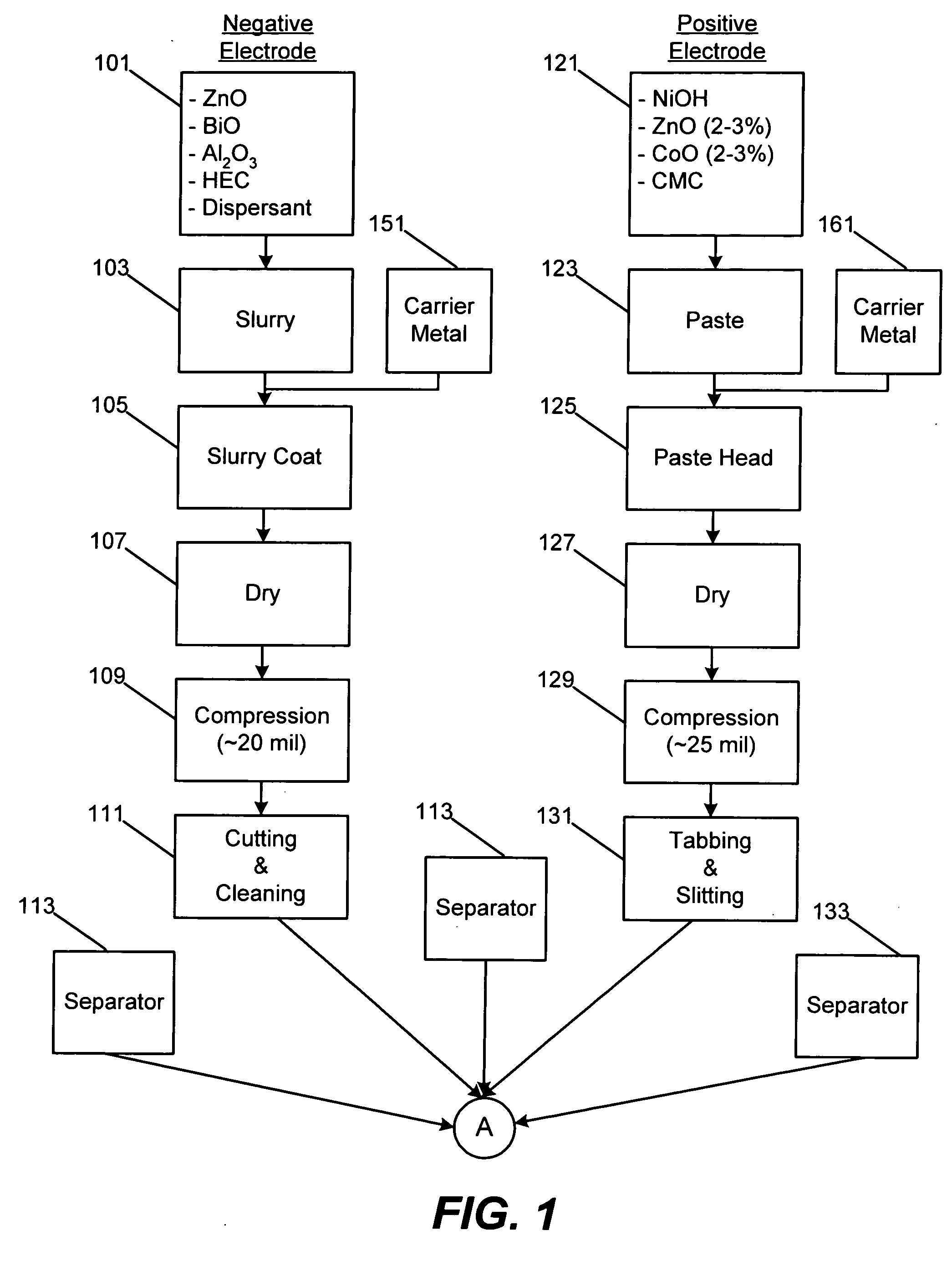Method of manufacturing nickel zinc batteries
a technology of nickel zinc batteries and nickel zinc batteries, which is applied in the field of nickel zinc rechargeable battery cells, can solve the problems of adversely affecting the performance of nickel zinc cells, and achieve the effect of reducing the agglomeration of particles
- Summary
- Abstract
- Description
- Claims
- Application Information
AI Technical Summary
Benefits of technology
Problems solved by technology
Method used
Image
Examples
Embodiment Construction
[0031] The present invention relates generally to techniques for the manufacture of nickel-zinc rechargeable battery cells using techniques similar to generally accepted production techniques for nickel-cadmium rechargeable power cells.
[0032] Embodiments of this aspect of the invention are discussed below with reference to FIGS. 1-4b. However, those skilled in the art will readily appreciate that the detailed description given herein with respect to these figures is for explanatory purposes as the invention extends beyond these limited embodiments.
[0033] Turning first to FIG. 1, FIG. 1 presents a diagrammatic representation of a manufacturing process flow for an embodiment of the present invention. Initially, the process includes two separate paths, one for fabricating a negative electrode sheet and the other for fabricating a positive electrode sheet. Eventually, in the process described, these two paths converge when the separate negative and positive electrodes are assembled in...
PUM
| Property | Measurement | Unit |
|---|---|---|
| diameter | aaaaa | aaaaa |
| diameter | aaaaa | aaaaa |
| diameter | aaaaa | aaaaa |
Abstract
Description
Claims
Application Information
 Login to View More
Login to View More - R&D
- Intellectual Property
- Life Sciences
- Materials
- Tech Scout
- Unparalleled Data Quality
- Higher Quality Content
- 60% Fewer Hallucinations
Browse by: Latest US Patents, China's latest patents, Technical Efficacy Thesaurus, Application Domain, Technology Topic, Popular Technical Reports.
© 2025 PatSnap. All rights reserved.Legal|Privacy policy|Modern Slavery Act Transparency Statement|Sitemap|About US| Contact US: help@patsnap.com



